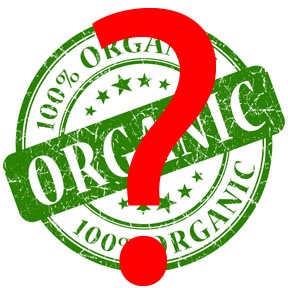Did you know that the petunia releases its fragrant compounds at night when pollinators are more likely to be out and about? Or that the rotting animal scent of the corpse flower comes from the same stuff that you smell in skunk beer and Limburger cheese? Scientists have also discovered the enzyme that gives roses its signature fragrance. Knowing this, rose breeders can use this knowledge to create even more potent smelling flower of love.
Betsey Seibel
Recent Posts
Tags: VOC
Fact or Fiction:Organic Foods are Safer For You
Posted by Betsey Seibel on Mon, Oct 26, 2015 @ 03:04 PM
A search across the Internet, and it’s clear that the answer to whether the statement, “Organic foods are safer for you,” is fact and fiction depends on whom you ask. Nearly 95% of people surveyed by the Soil Foundation said the top reason they buy organic food is to avoid pesticides, but unfortunately, organic farmers still use pesticides and fungicides to protect their crops.
Tags: pesticide analysis
Avoid VOCs - Go Outside and Get SomeFresh Air
Posted by Betsey Seibel on Mon, Sep 28, 2015 @ 10:00 AM
Scientists in Edmonton, Alberta Canada wanted to find out where the air is better, inside or outside the home. The objective according to the study published in the August issue of Building and Environment “was to get a better understanding of emission sources of volatile organic compounds (VOCs) and their contributions to indoor and outdoor concentrations in residences in Edmonton.”[1] With all the concerns about air quality, one might think that the obvious answer is inside with the filtered air conditioning.
Tags: VOC
6 ways in which smartwatches may be helpful in a laboratory
Posted by Betsey Seibel on Fri, Sep 25, 2015 @ 01:54 PM
Do Smartwatches Have a Place in the Lab?
According to analyst firm IDC, smartwatch sales will jump 500% in 2015[i] led in large part to the interest of Apple Watch. Now, Apple Watch was not the first smartwatch on the market. Companies such as Pebble and Samsung had products on the market years ago. The hype behind Apple Watch however, has had a dramatic impact on the attention for the wrist-wear market. The success of the market ultimately will come down to applications and use cases. People who purchase smartwatches are looking for more than something that can keep time. If they are going to spend $200 to $10,000 on a digital smartphone companion, it better have a positive impact on their lives.
New Study Raises Questions about Hydraulic Fracking and Groundwater Contamination
Posted by Betsey Seibel on Wed, Aug 19, 2015 @ 01:29 PM
A recent study published in Environmental Science and Technology found “elevated levels of numerous metals and chemical compounds” from 550 groundwater samples collected from private and public supply water wells in Texas. The wells draw their water from aquifers throughout the 5,000 square miles Barnett shale formation of Texas. While the University of Texas Arlington (UTA) study did not directly attribute the contamination from hydraulic fracturing activities taking place in the area, the authors did conclude, “It is more likely that it (fracturing) has had an effect on water quality.[i]
Tags: Hydraulic Fracturing, Fracking
New Tools Help Michigan Fruit Harvesters Manage and Maximize Insecticide Use
Posted by Betsey Seibel on Wed, Aug 05, 2015 @ 05:14 PM
Early in 2015, entomologists in Michigan were concerned about the possible threat of the spotted wing drosophila (SWD) on tart cherries. The same pest had wreaked havoc on soft fruits and berries, so producers in the nation’s largest tart cherry production area had the right to be worried.
According to SpottedWing.org, the SWD is “an insect pest of economically valuable small fruit and tree fruit crops.” The specie is particularly well known in the Pacific Northwest, but has spread to established fruit growing regions across the country. It was discovered in 2014, that “insecticides that are effective against cherry fruit fly are not effective against SWD. So presence of the insect could result in the growers having to apply from 1.5 to 3 more sprays per season… using different materials.”[i] Experts consider the SWD a “game changer for tart cherry growers.”[ii]
Beyond Facebook and LinkedIn, The Researchers Social Networks
Posted by Betsey Seibel on Wed, Jul 15, 2015 @ 12:14 PM
In previous posts, we talked about the growth of the social networks and the role that they can play in helping researchers and lab managers with their jobs. While Facebook, Twitter and LinkedIn are common most users of the Internet and mobile devices, less familiar are the specialized social-networking sites that target specific user groups and professionals. Among these is ResearchGate, a free social site for academics founded in Berlin in 2008 by two virologists and an IT specialists. ResearchGate recently celebrated seven years in business by surpassing seven million members.
Tags: Social Media
Pesticides in Marijuana - Is it Safe to Smoke?
Posted by Betsey Seibel on Thu, Jul 09, 2015 @ 12:14 PM
While debate over the legalization of marijuana continues, states that have legalized the plant for recreational and medical use are facing a challenge that may have been overlooked. Most farmers use federally approved pesticides to help control bugs and mold, but marijuana, while legal in some states, has no oversight by the Federal government. This means that no one is regulating what pesticides can be used to keep bugs away and prevent other damage to the crops. Nonetheless, the crops are valuable, and to protect their investment, many growers have started to use chemicals, which may or may not be safe for the plant or consumers.
Tags: pesticide analysis
Mmmm… Bacon! The VOCs that make Bacon Smell So Good
Posted by Betsey Seibel on Wed, Jun 17, 2015 @ 11:30 AM
The UK-based Chemistry teacher behind Compound Interest, a blog that takes a closer look at the chemical compounds we come across every day, asked the question “Why does bacon smell so good?” He came across a study that “tried to discover the compounds that give frying bacon its aroma, by comparing it with the aromas released when cooking pork loin. They did this by frying the meat, mincing it, then passing nitrogen gas over it to collect any volatile organic compounds that were being released. The collected volatile compounds were then passed through a gas chromatograph and mass spectrometer in order for identification to be carried out.”
Tags: VOC
What is exactly causing the decline in bee colonies across North America remains a hot topic for debate. In our September 2014 blog, we addressed the concern of neonicotinoid pesticides, which according to some reports affect the nervous system of insects resulting in paralysis and death. Approved in 1994 in the United States, neonicotinoid pesticides have quickly become the target of environmentalists who claim that it was at the same time that the beekeepers began to notice severe colony loss, upwards of 30-90%.
Tags: pesticide analysis









